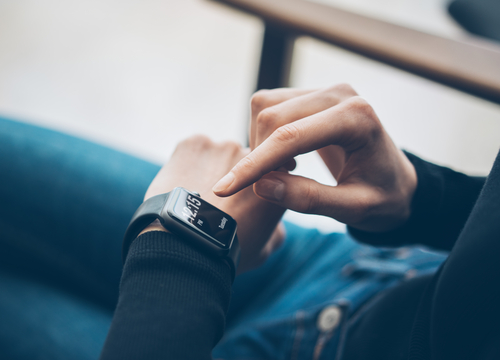At-home Activity Trackers and Spirometry Devices May Aid IPF Trials, Small Study Finds

At-home use of wearable physical activity trackers and portable spirometry devices may offer a feasible way of evaluating people with idiopathic pulmonary fibrosis (IPF) taking part in clinical trials, a small study suggests.
These findings were reported in “Mobile Health Monitoring in Patients with Idiopathic Pulmonary Fibrosis,” published in the journal Annals of the American Thoracic Society.
Previous studies have suggested that physical activity trackers could be used to measure changes in exercise capacity. Daily assessment of respiratory function with hand-held spirometry devices, as compared to standard laboratory-based methods of determining forced vital capacity (FVC; a measure of lung function), could also help predict long-term outcomes.
A team led by researchers at the University of Calgary and University of Saskatchewan, both in Canada, conducted a 12-week trial to explore the possibility to use hand-held spirometry — a pulmonary function test that measures the rate of air flow — and physical activity monitoring to evaluate people with IPF, a progressive pulmonary disease that requires close monitoring.
The study enrolled 20 IPF patients (mean age of 73), who were asked to use the physical activity tracker Fitbit Flex 2, worn on the wrist, for 12 weeks while collecting daily spirometry data using the portable spirometer Spiro PD. All had to have access to the internet to transmit data, and were given personalized instruction in using the spirometry device.
Connect with other people and share tips on how to manage PF in our forums!
Participants were also evaluated with a standard lab-based spirometry test at the beginning of the study, and again every four weeks.
Analysis of lung function data collected by the hand-held and lab-based methods showed results to be very similar between the two.
In general, 84% of the patients adhered to the hand-held spirometry evaluations, and 85% completed them each day.
Daily physical activity using the wearable device was also found to be well-accepted, with 91% and 88% mean adherence and persistence. Detected mean distance walked per day was associated with baseline (study start) values in the 6-minute walking distance test (6MWD; a test of exercise capacity), and with gas diffusion capacity (determines the amount of oxygen traveling in the body).
During the study’s 12 weeks, the median number of steps per day remained stable (around 4,224 steps per day at baseline, and 4,342 daily steps at 12 weeks), while 6MWD values declined by 7.5 meters (about 24.6 feet).
“[D]aily hand-held spirometry and physical activity monitoring is feasible in patients with IPF” with “potential applications to clinical trial design,” the researchers wrote. Data on physical activities, however, were “irretrievably lost for two patients, highlighting the importance of frequent data capture and close monitoring in studies using mobile technology.”
Longer-term studies in larger patient groups are needed “to characterize the clinical implications of changing physical activity, recognizing it may be influenced by several other variables,” the team added.






